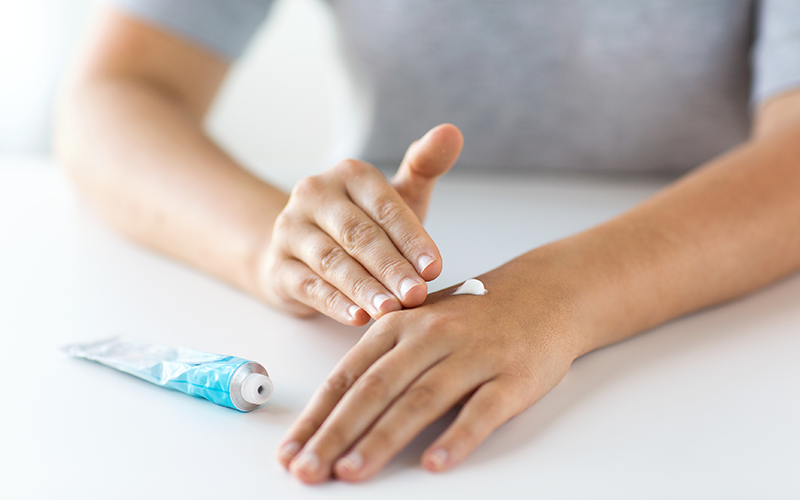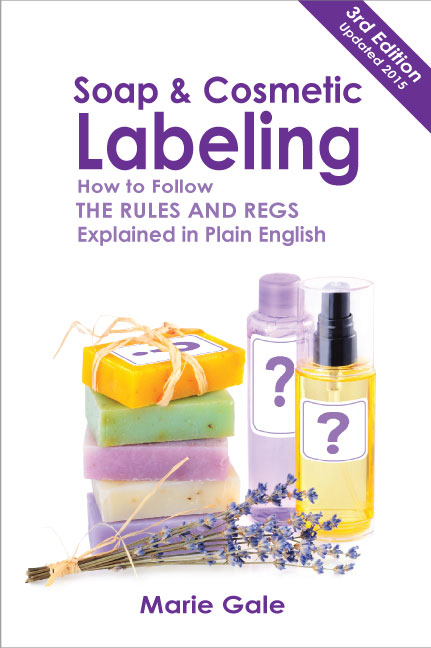This is part of the Labeling Basics series in which I am taking labeling back to its most fundamental parts, starting with the legal terms used and then going on to each requirement for soap and cosmetic labels.
Drugs of all types are around us every day. There are a number of different ways to define a “drug”. Here we’re going to take a look at the legal definition of “drug” and how it applies when you are making handcrafted soap and cosmetics (or other products).
The regular English word drug comes from the Middle French drogue “ingredient used in chemistry or pharmacy.” Interestingly, that stems from the French droguerie “a thing which is of poor quality,” “a person whom one does not value,” “poor merchandise,” or “worthless thing.” Even earlier, it derives from drouget meaning “badly dressed.” Philosphical discussions aside, isn’t it interesting that the word chosen for an ingredient used in pharmacology came from something that was worthless? Maybe because certain ones MADE people or things worthless. Hmm….
“Drug” – Common Definitions
- A substance with intoxicating, stimulant, or narcotic effects used for cultural, recreational, or other non-medicinal purposes; Especially a controlled substance used illegally and often habitually.
- (figurative) Something regarded as having properties similar to those of a drug, especially being addictive.
- A substance that has a physiological effect on a living organism
Physiological
Affecting the function or structure.
1. Intoxicating substance; especially a controlled substance.
This is your normal definition of a drug—something that is ingested and causes mental and physical effects.
Examples of use:
- He took drugs to stay awake when driving long distance.
- The trend of drug use by young people is disturbing.
2. Something similar to a drug; addictive.
This is also a common definition of a drug, but refers not to things you ingest that cause physical effects, but other things which can be intoxicating and/or addictive.
Examples of use:
- Gambling was like a drug to him.
- For thrill-seekers, the rush of a bungi-jump is a drug to which they are addicted.
3.A substance that has a physiological effect on a living organism.
More broadly, anything that can affect the functioning of a living organism and its systems and organs.
Examples of use:
- Something which is anti-bacterial kills living organisms and is a drug.
- Many plants can act as drugs when eaten.
Directly from the regulations:
The term drug means: …
(B) articles intended for use in the diagnosis, cure, mitigation, treatment, or prevention of disease in man or other animals; and
(C) articles (other than food) intended to affect the structure or any function of the body of man or other animals.
21 USC 321(g)(1)
This is the legal definition of drug, from the Food Drug and Cosmetic Act. It determines what is a drug for legal purposes within the United States. Note that a key part of the definition is intended. Drugs are intended to affect the physiology (the function and structure) of the body.
Examples:
- Diagnosis: pregnancy test.
- Mitigation: blood thinners, lowers blood pressure, reduces redness, soothes sore muscles.
- Treatment: antibiotics, cures acne, reduces scarring.
- Prevention: anti-bacterials, anti-fungals, flouride toothpaste, vaccines.
- Affecting the body structure: increases bone density, increased collagen, weight reduction.
- Affecting the function: muscle relaxants, improved hair growth, sunscreen, skin protectants.
The intended use is determined by what the manufacturer SAYS about the product and its ingredients in the label and labeling for the product.
In other words, what you say about your product can make it a drug!
Drugs vs. Cosmetics
Many drug products come in the form of creams, lotions, salves, or soaks—and are very similar in appearance to cosmetic products. The difference is in the statements made to describe the intended use of the product.
Why is it important?
A product that meets the FDA’s legal definition of a drug must be approved by the FDA before it can be marketed and sold. Any drug which has not been previously approved is considered an unapproved new drug and is illegal to sell.
In addition, all drug manufacturers must be registered with the FDA, and usually the state in which they are located. They must follow very strict good manufacturing practices (which are defined in the regulations), and are subject to inspection at any time.



Leave a Reply